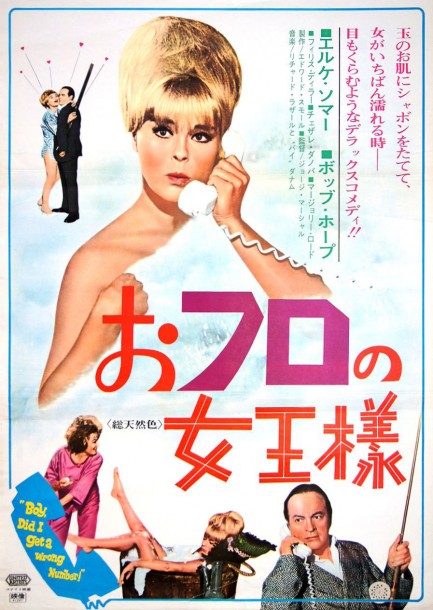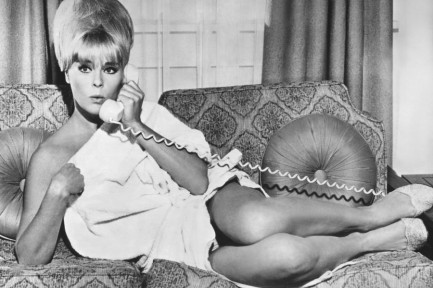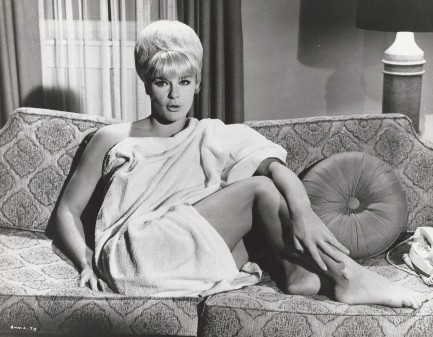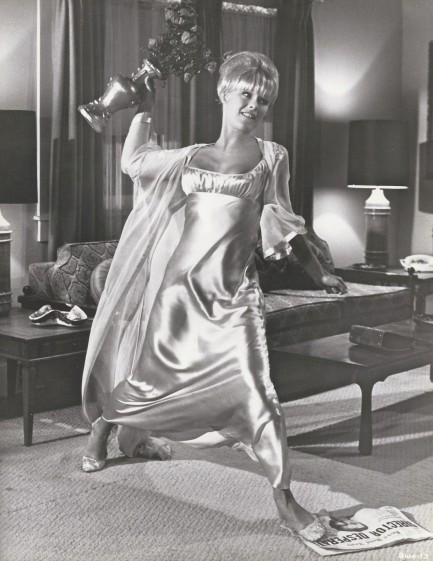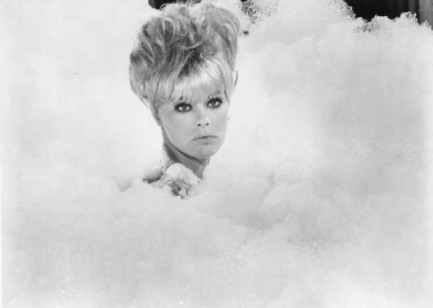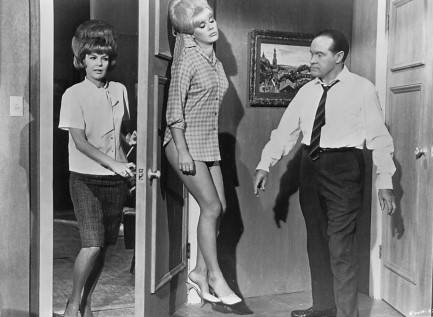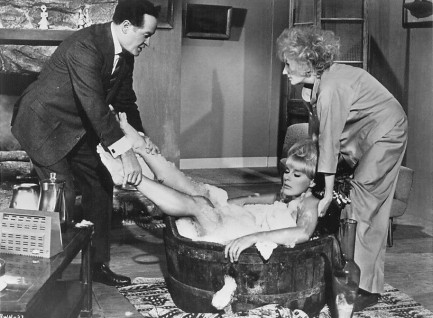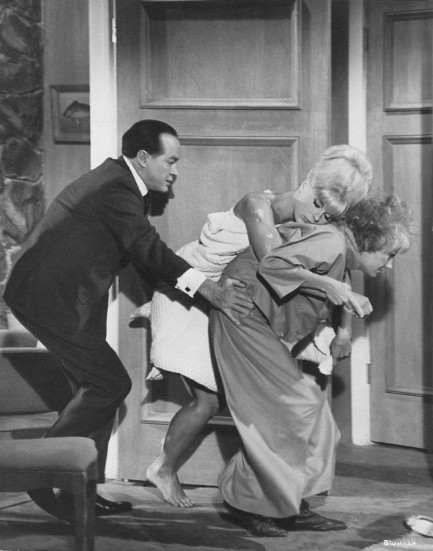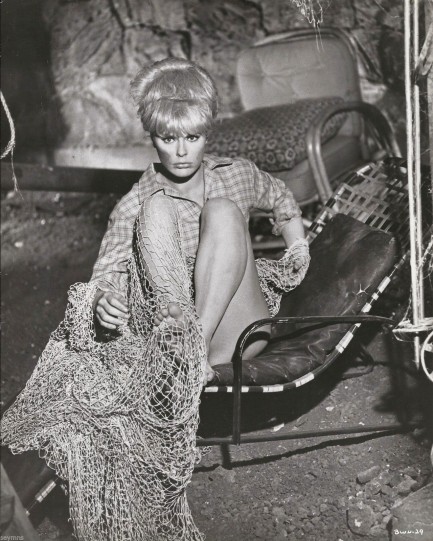 Notable show business encounters: the Pelvis meets the Throat. 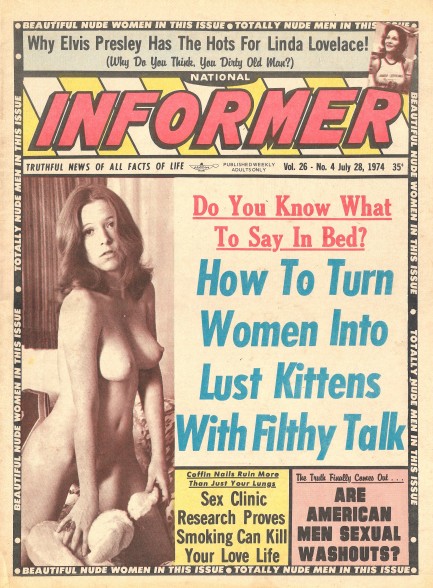
Issues of National Informer on back-to-back days? Sure, why not? The above example, published today in 1974, is five years older than yesterday's, and in the intervening timeframe the editors seem to have stopped woman bashing. They're still treating them as complete sex objects, but that's what Informer was all about. They've also replaced the (not so) Great Criswell with new psychic Mark Travis. We're still curious who actually bought these mags (we do it for scientific purposes, so we don't count), and exactly how seriously they took it. Our guess is not very.
The main attraction in this issue is the story on swivel-hipped musical star Elvis Presley and Linda Lovelace, centerpiece of the xxx smash Deep Throat. Lovelace, who was purportedly involved—at least for a few hours at a time—with such aging stars as Richard Burton, Rex Harrison, Bob Hope, Dean Martin, and (of course) Frank Sinatra, as well as young Hollywood rebels Paul Newman, Marlon Brando, and Dennis Hopper, is alleged to have met up with Presley in Las Vegas. You could be forgiven for assuming that nature took its course, but it didn't. At least, according to reports.
What on Earth could have stopped these two sex elementals from joining forces? Presley allegedly told Lovelace he was temporarily hors de combat because he had hurt himself having sex with Natalie Wood the previous week. Hey, we just relay this stuff. We make no claim that any of it is true. And we thought Natalie was so sweet. Well, you should never judge a book by its cover. Tabloids, on the other hand, you can safely evaluate at a glance. Informer is just as down and dirty as it looks.
 I came up with it all by myself. Totally groovy, right?  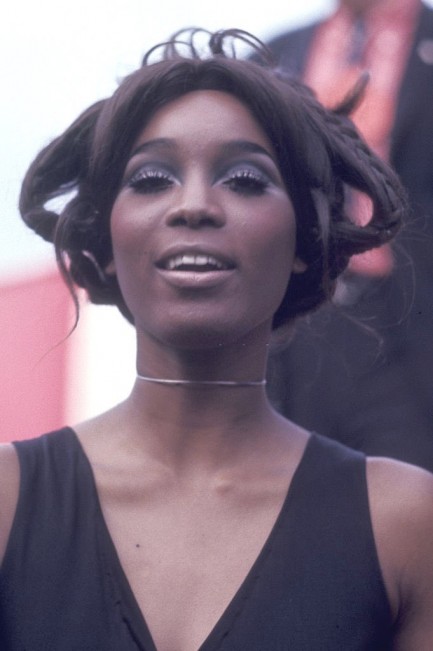 
These shots show U.S. actress Teresa Graves today in 1970, and despite the fact that her bizarro hairdo makes her look counterculture, she was in Washington, D.C. attending the Honor America Day celebration. If you've never heard of Honor America Day, that's because it was a one-off, hastily cobbled together by then-president Richard Nixon, who was under pressure due to his decision to send U.S. troops into Cambodia during the Vietnam War, a move which precipitated a protest at Kent State University at which Ohio National Guard troops shot and killed students. Graves was a minor television star at the time, a recurring guest on the show Rowan & Martin's Laugh-In, however she was a natural for the D.C. event because she had built her career partly by touring Southeast Asia as a singer with Bob Hope's USO show. She would eventually become a major star on the police drama Get Christie Love! By then she'd ditched the hairdo that looked like it picked up signals from space for something conventional, as you can see at this link. But whatever shape her hair took, she was quite beautiful.
 Don't be scared—I just want you to be absolutely still for the next five hours while I curl up on your lap. 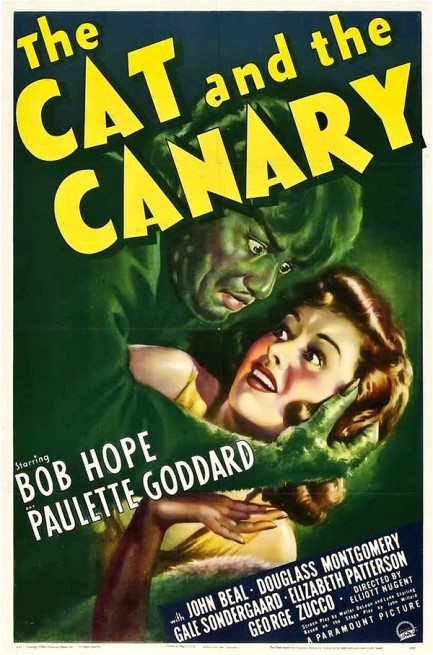
Above, another promo poster for the classic comedy mystery The Cat and the Canary, with Bob Hope and Paulette Goddard. We showed you a Swedish promo last year but didn't talk about the film. It's based on a 1922 play by John Willard, which makes it old enough that even the cleverest jokes are probably too recognizable for modern viewers to generate legit laughs. A century is a long time in the evolution of humor. Well, except for your embarrassing country grandpa who thinks it's funny to spit chaw on his arthritic old smellin' hound. Time has stopped for him. Did a while ago. Point is, you've seen these gags reused hundreds of times.
But here's what matters. Hope and Goddard have great chemistry and emanate a lot of charm. As films of this sort go, this one has everything: creepy old house in a swamp, a contested inheritance, secret passages, misty gardens, disappearing bodies, a painting with peephole eyes, confounding clues, a love story, and a bang-up climax. It's a great flick. The first version was made in 1927 with Laura La Plante and Creighton Hale, and the latest version was made in 1978 with Honor Blackman and Michael Callan, but this version—the best of the lot we think—premiered in the U.S. today in 1939. 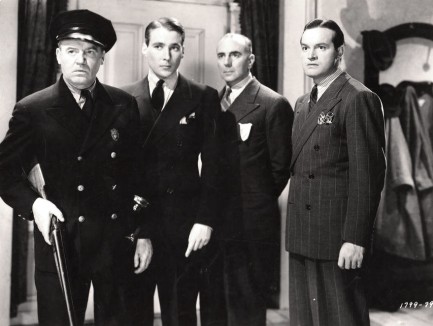 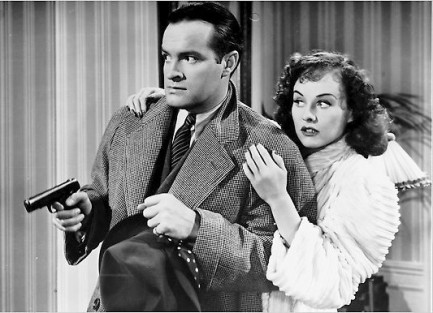 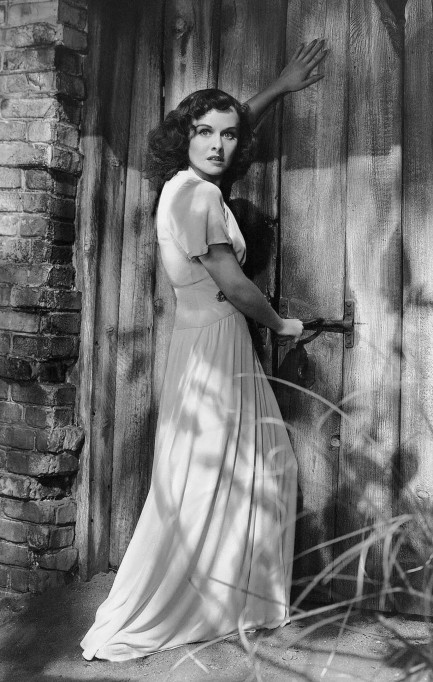  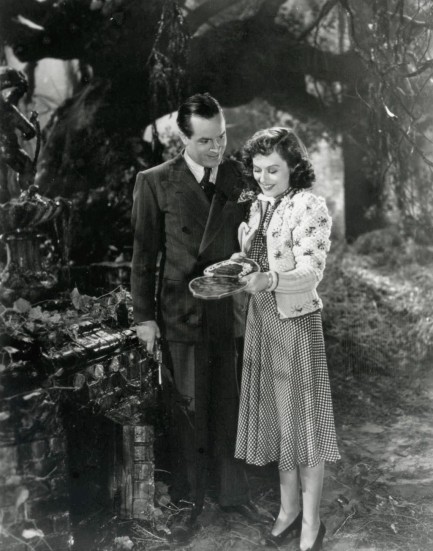 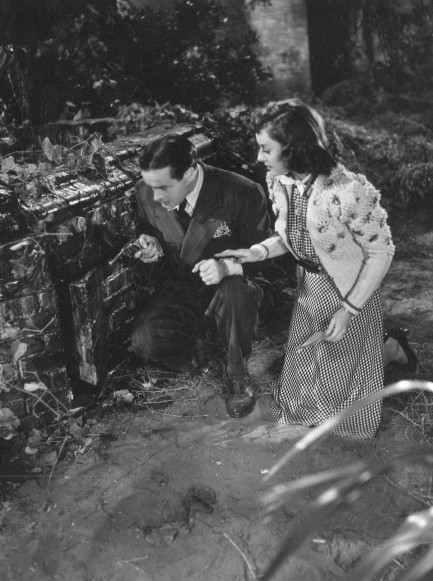 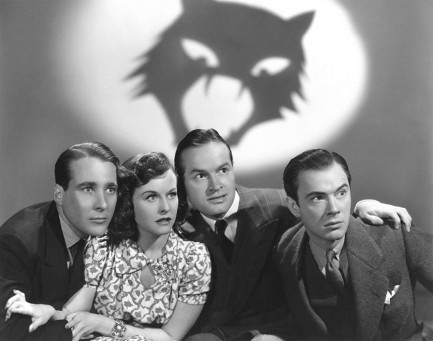
 All she needed was for someone to believe. 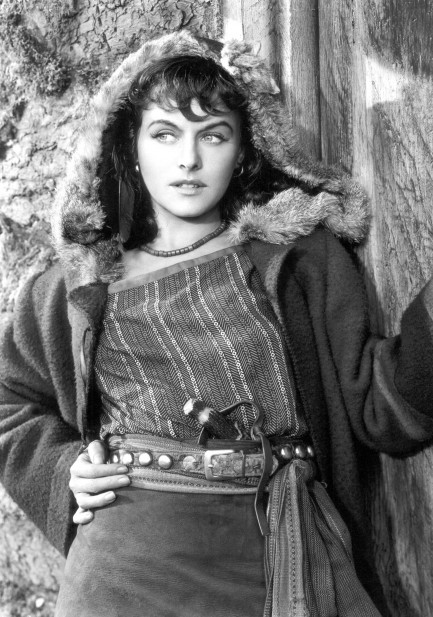
Paulette Goddard had more false starts to her career than most Hollywood legends. During the late 1920s and early-to-mid 1930s she worked—without making much impact—for Selznick International Pictures, George Fitzmaurice Productions, 20th Century Pictures, Hal Roach Studios, and both Goldwyn Pictures and Metro-Goldwyn-Mayer. She turned some heads in Modern Times, co-starring with Charlie Chaplain, who was her boyfriend at the time, but her major break came with Paramount when she starred opposite Bob Hope in The Cat and The Canary. She never looked back, appearing in seventeen films in the next five years, and more than fifty over the course of her career. One of those was Northwest Mounted Police, which is where the above promo photo comes. It dates from 1940.
 What do the mice do if the cat's never away? 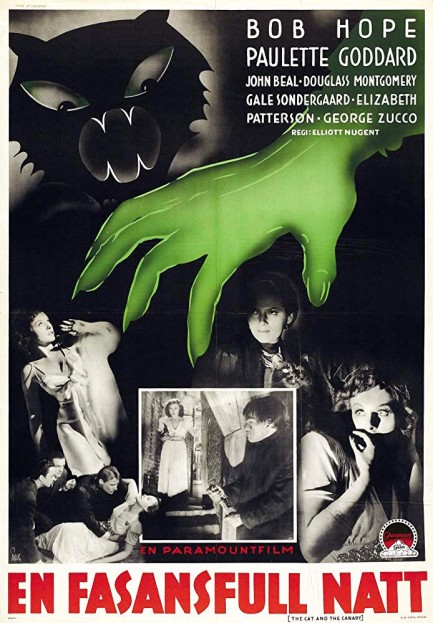
This was an unexpectedly awesome find. It's a Swedish poster for En fasansfull natt, better known as The Cat and the Canary. This promo gave us a laugh, because if you translate the Swedish title it's “a horrible night.” That's so Swedish, so no-nonsense, so to the point. You'd think a direct translation Katten och kanariefågan would have worked, but maybe not—we once chatted with someone from Sweden who said they didn't get bananas until the ’80s, so maybe the title was changed because nobody knew what a canary was. After premiering in the U.S. En fasansfull natt opened in Sweden today in 1939.
 Jeanne Carmen shows off her golf form. Her playing partners get fairway wood. 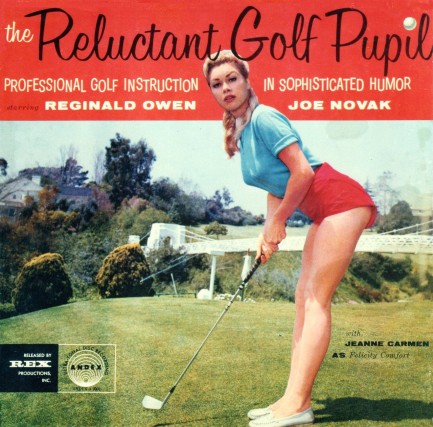 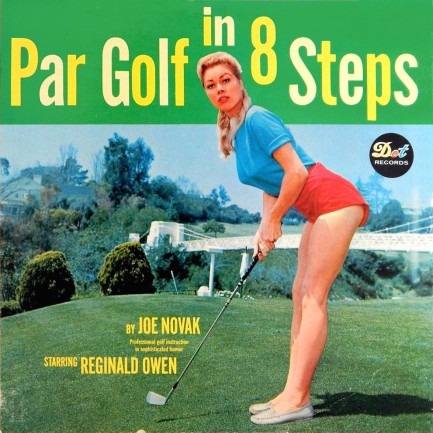
These items show Jeanne Carmen, model and b-movie actress, fronting The Reluctant Golf Pupil and Par Golf in 8 Steps, albums of golf instruction by Joe Novak punctuated with comic interjections from Reginald Owen. Though these seem like different albums, they're the same, just issued a year apart. Inside both you get liner notes written (allegedly) by Bing Crosby and Bob Hope, who were known to spend time on the links. Carmen spent time on the fairways as well. She was nationally known as a trick-shot golfer, a skill she had picked up starting a decade earlier. She toured the U.S. pulling stunts such as using rubber shafted clubs and nailing drives off tees clenched between the teeth of supine (and terrified) male volunteers. So while these images appear often online, we've rarely seen it noted that Carmen was an appropriate choice for a cover star. There's more to her story, including chapters involving gangster Johnny Roselli, friendships with the Kennedys and Marilyn Monroe, and hook-ups with Elvis Presley and (of course) Frank Sinatra. We may get back to her later. In the meantime, if you want to see a really nice swing check out Ana Berthe Lethe on the course here.
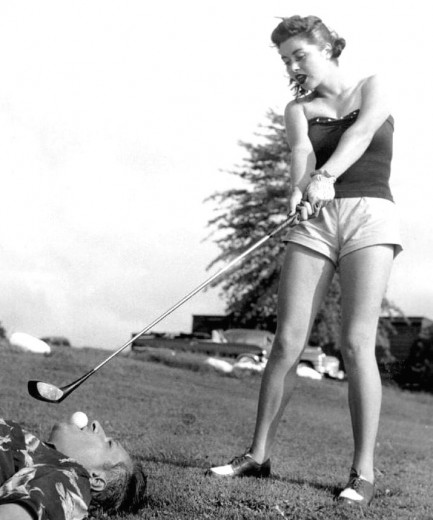
 The Lowdown has the scoop on a fantastic plastic. 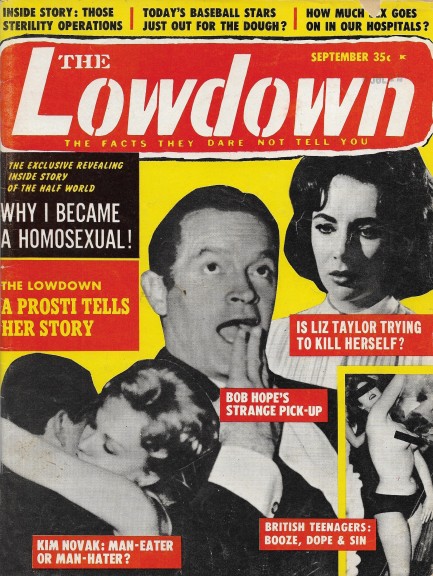
Today we're back to tabloids with an issue of The Lowdown published this month in 1962. The cover features Bob Hope goofing around, Elizabeth Taylor looking serious, Kim Novak nuzzling, and a random naked party girl randomly partying naked. Inside the issue are stories on Hope getting the hots for trans star Coccinelle in a French nightclub, Novak raking a series of suitors over the coals, and baseball players succumbing to greed. So much material in these tabloids, and so little time to highlight a story or two. But forced to make a choice, we're opting to discuss a piece on something called Scoobeedoo. How can we not? We all remember the cartoon, and now this story seemed guaranteed to tell us where the name of the legendary dog came from. We never knew we wanted to know that. But when we saw the word Scoobeedoo we realized, yes, we want to know.
Lowdown describes Scoobeedoo as a craze and a do-it-yourself gimmick. Apparently, it was popularized when French singer Sacha Distel wrote a 1958 song of the same name. But he didn't invent it—he just sang about it. The actual thing was invented by a French plastics company and called Scoubidou. It was basically a spool of brightly colored plastic cord that could be woven or tied to make—well, whatever you wanted. You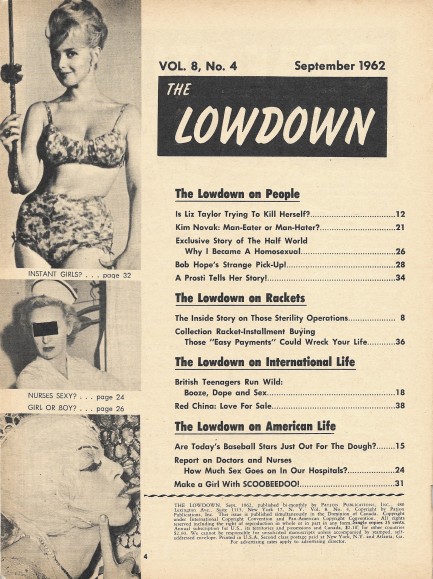  could make lampshades, baskets, placemats, keychains. A California man famously used it to make bikinis. We imagine it would work for household repairs, light sexual bondage, whatever you needed it for. The stuff was as popular as the hula hoop for a while. Apparently figures in the electrical industry even complained that a shortage of wiring insulation was due to Scoubidou because it used the same type of plastic. could make lampshades, baskets, placemats, keychains. A California man famously used it to make bikinis. We imagine it would work for household repairs, light sexual bondage, whatever you needed it for. The stuff was as popular as the hula hoop for a while. Apparently figures in the electrical industry even complained that a shortage of wiring insulation was due to Scoubidou because it used the same type of plastic.
Readers above a certain age will already know about all this, of course, but we had no idea. We weren't around back then. And that, succinctly, is why we maintain this website—because we learn about a past we never experienced. But surprisingly Scoubidou isn't just the past. It apparently still exists. It even has a Wikipedia entry with examples of the many things you can make (but no bikinis). So this was a very informative issue of The Lowdown, all things considered. The only thing we're bummed about is that our Scoubidou research provided no actual confirmation that the cartoon dog Scooby-Doo got his name from the toy. But he had to, right? Maybe a reader has the answer to that. In the meantime we have more than twenty scans below for your enjoyment and other issues of The Lowdown you can access by clicking the magazine's keywords at bottom. Update: a reader does have the answer. One of you always does. J. Talley wrote this: The series was originally rejected by CBS executives, who thought the presentation artwork was too frightening for children and that the show must be the same. CBS Executive Fred Silverman was listening to Frank Sinatra's “Strangers In The Night” (with the scatted lyric “dooby-dooby-doo”) on the flight to that ill-fated meeting. After the show was rejected, a number of changes were made: the Hanna-Barbera staff decided that the dog should be the star of the series instead of the four kids, and renamed him Scooby-Doo after that Sinatra lyric. The spooky aspects of the show were toned down slightly, and the comedy aspects tuned up. The show was re-presented, accepted, and premiered as the centerpiece for CBS's 1969-1970 Saturday Morning season. Thanks, J. That's another hole in our historical knowledge successfully filled in. Is it any surprise Sinatra was involved somehow? That guy really got around. 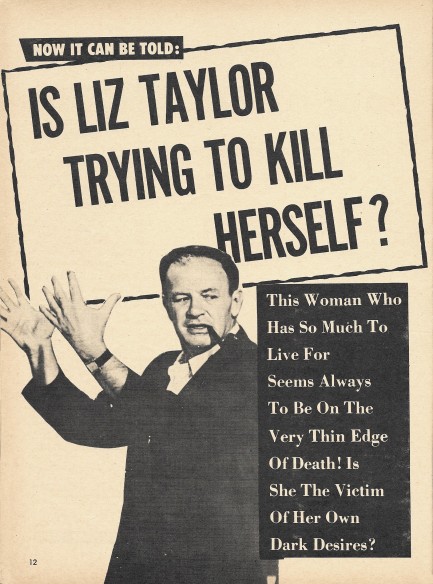 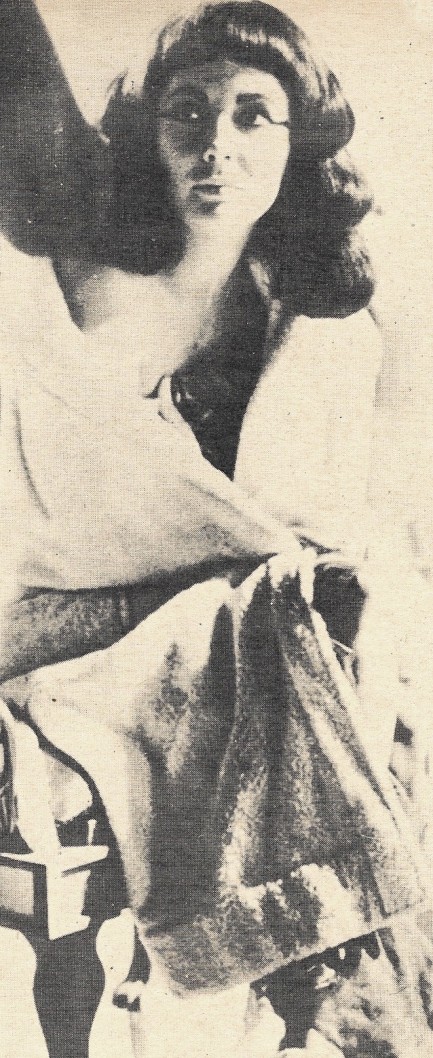 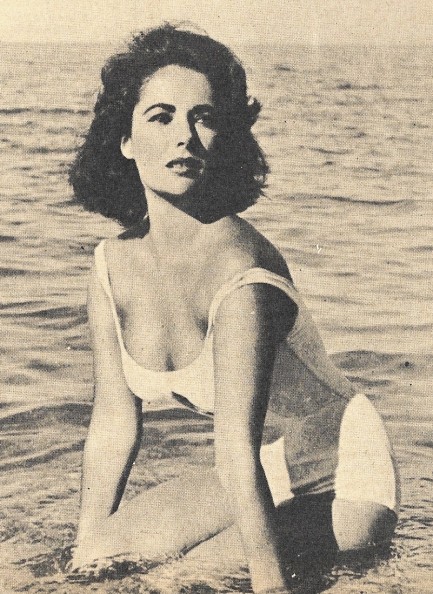 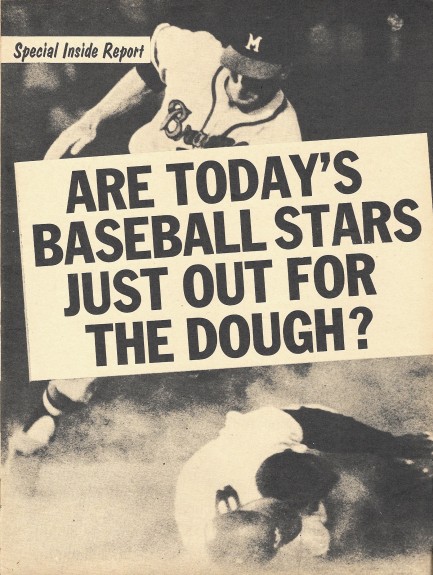 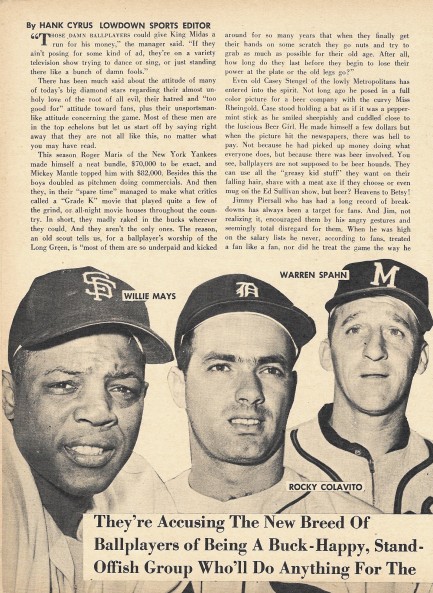 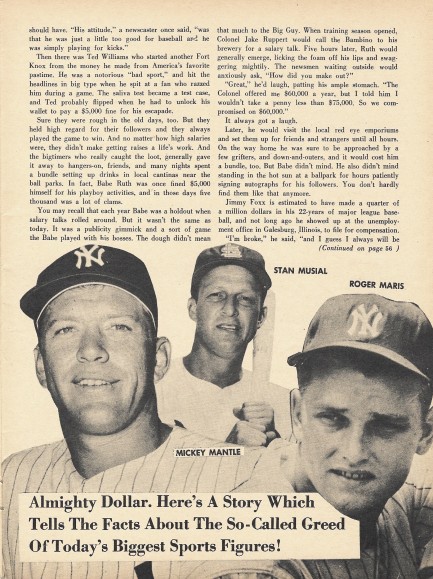 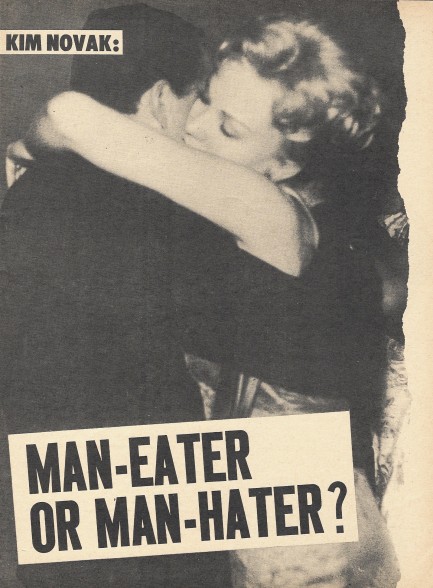 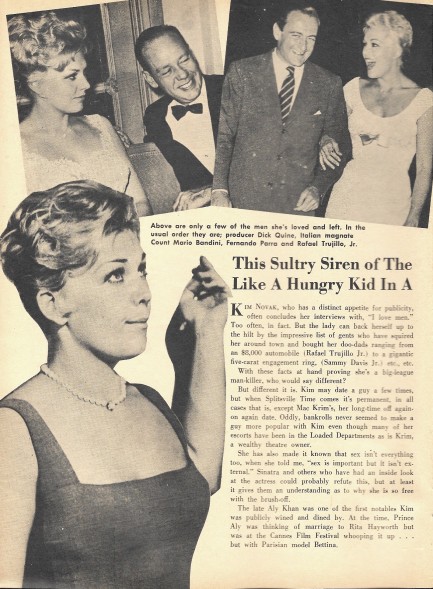 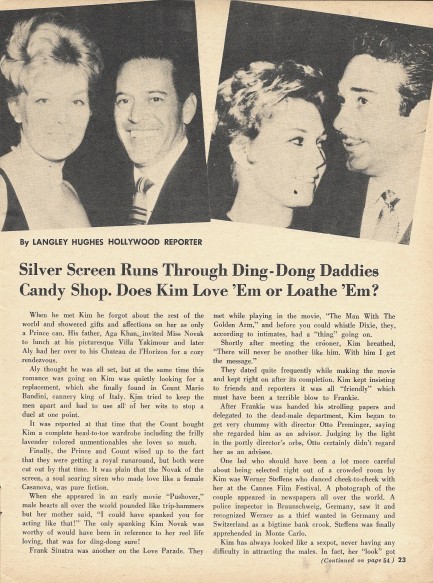 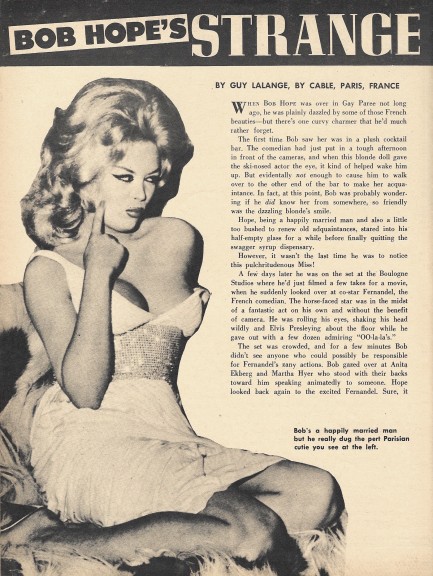 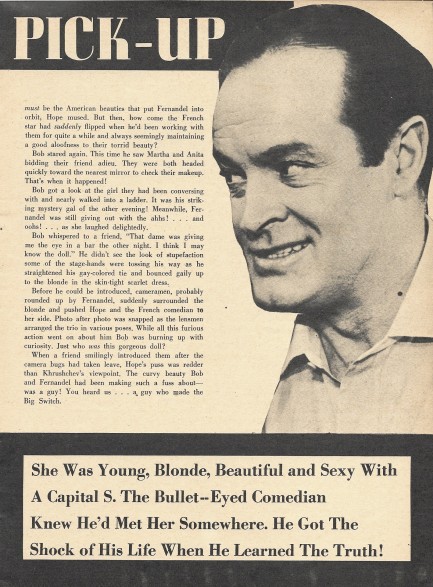 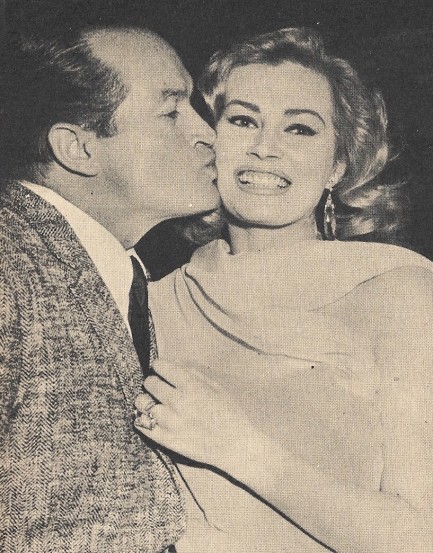 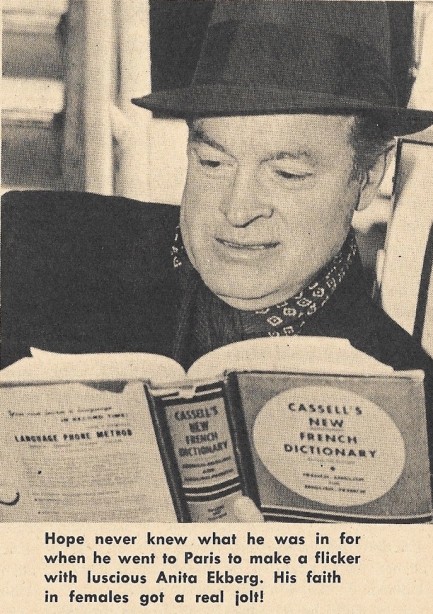 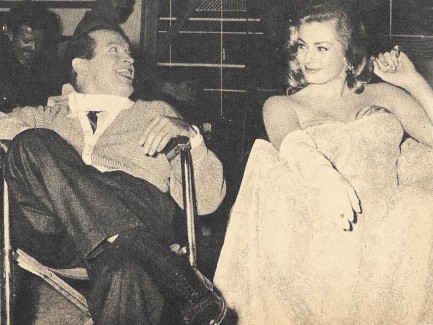 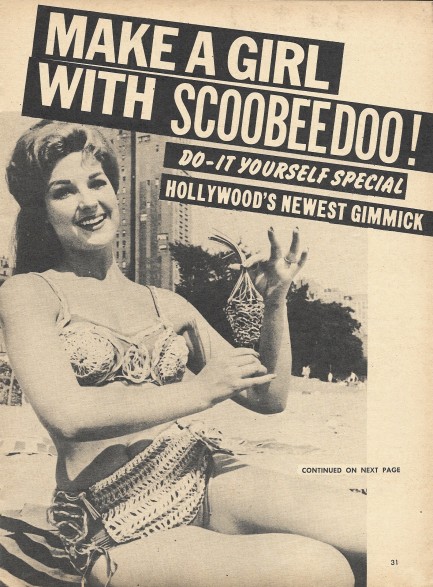 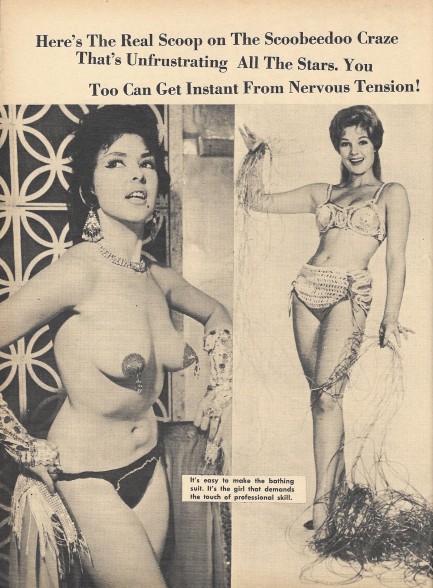 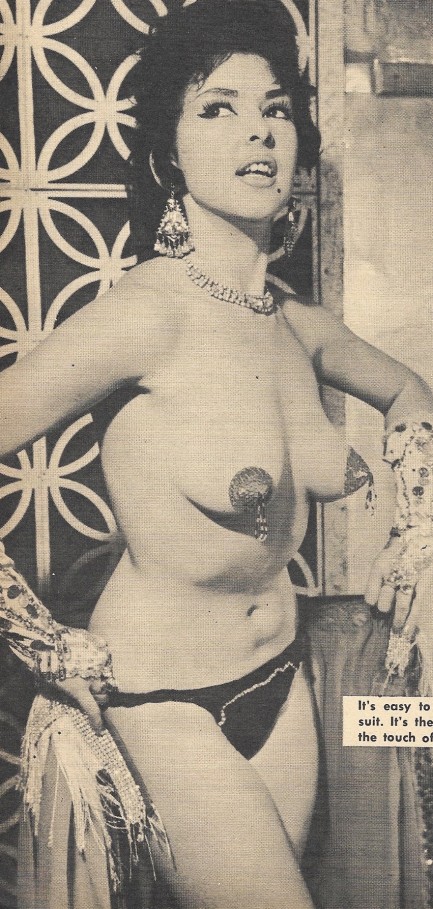 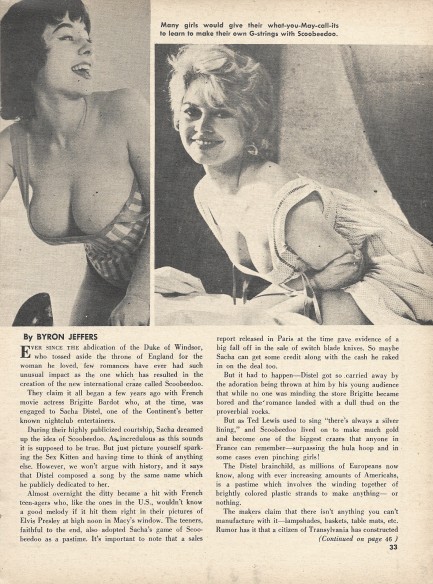 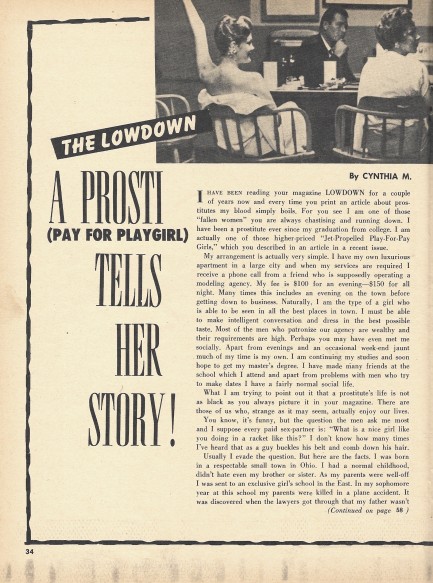 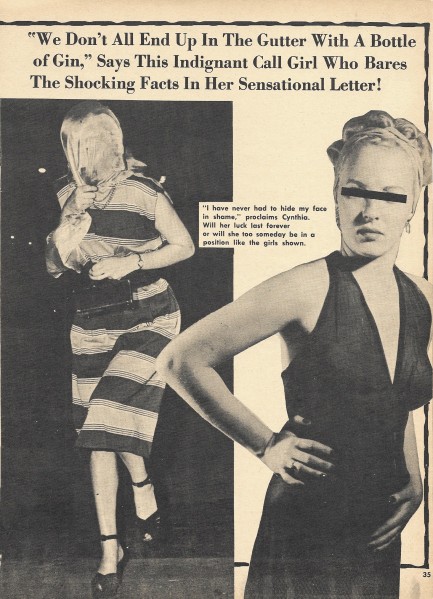 
 Who, this jerk? I just work with him. 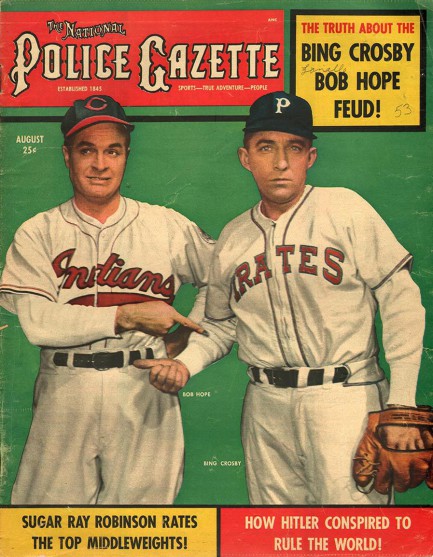
This awesome August 1953 National Police Gazette featuring Bob Hope and Bing Crosby cut-and-pasted into baseball uniforms came from the website Ephemera Forever, which we had no idea existed until today. It’s a nice spot, and claims to have more than 22,000 rare items. The prices? Well, those are high. But you can always browse, at least. As far as the Hope/Crosby feud mentioned on the cover, different sources make claims of everything from full blown mutual hatred to the two using rumors of discord as a publicity stunt. However Hope did once reveal that Crosby never once invited him and his wife over for dinner, which seems like a pretty strong clue. See much more from Police Gazette in our tabloid index.
 Sommer isn’t over quite yet. 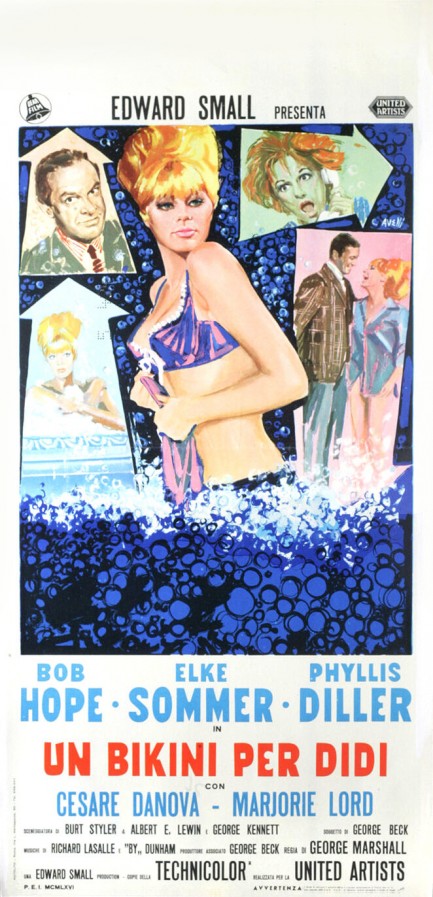 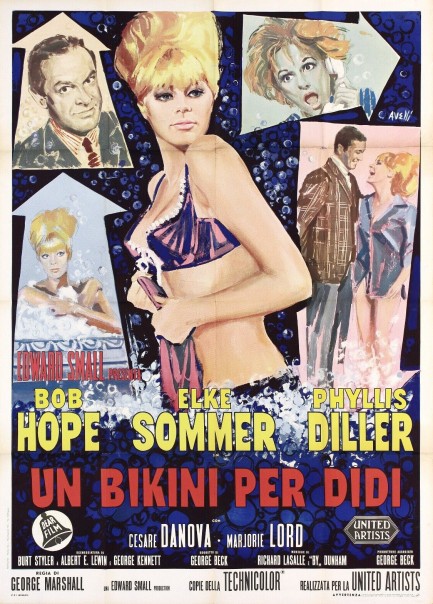
In June we shared a Japanese poster for Elke Sommer’s 1966 comedy Boy Did I Get a Wrong Number and talked about the movie a bit. Today we have two even better Italian promos for the same film. In Italy it was succinctly retitled Un bikini per Didi, and the art is by yet another Italian talent, this time Tino Avelli, who we haven’t featured before. We’ll have more from him later.

|
 |

The headlines that mattered yesteryear.
1945—Churchill Given the Sack
In spite of admiring Winston Churchill as a great wartime leader, Britons elect
Clement Attlee the nation's new prime minister in a sweeping victory for the Labour Party over the Conservatives. 1952—Evita Peron Dies
Eva Duarte de Peron, aka Evita, wife of the president of the Argentine Republic, dies from cancer at age 33. Evita had brought the working classes into a position of political power never witnessed before, but was hated by the nation's powerful military class. She is lain to rest in Milan, Italy in a secret grave under a nun's name, but is eventually returned to Argentina for reburial beside her husband in 1974. 1943—Mussolini Calls It Quits
Italian dictator Benito Mussolini steps down as head of the armed forces and the government. It soon becomes clear that Il Duce did not relinquish power voluntarily, but was forced to resign after former Fascist colleagues turned against him. He is later installed by Germany as leader of the Italian Social Republic in the north of the country, but is killed by partisans in 1945. 1915—Ship Capsizes on Lake Michigan
During an outing arranged by Western Electric Co. for its employees and their families, the passenger ship Eastland capsizes in Lake Michigan due to unequal weight distribution. 844 people die, including all the members of 22 different families. 1980—Peter Sellers Dies
British movie star Peter Sellers, whose roles in Dr. Strangelove, Being There and the Pink Panther films established him as the greatest comedic actor of his generation, dies of a heart attack at age fifty-four.
|

|
|

It's easy. We have an uploader that makes it a snap. Use it to submit your art, text, header, and subhead. Your post can be funny, serious, or anything in between, as long as it's vintage pulp. You'll get a byline and experience the fleeting pride of free authorship. We'll edit your post for typos, but the rest is up to you. Click here to give us your best shot.

|
|


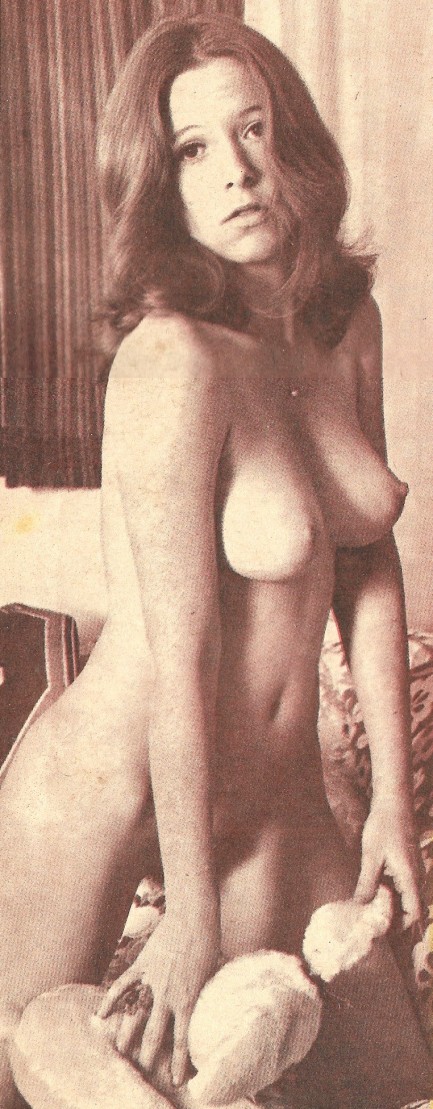
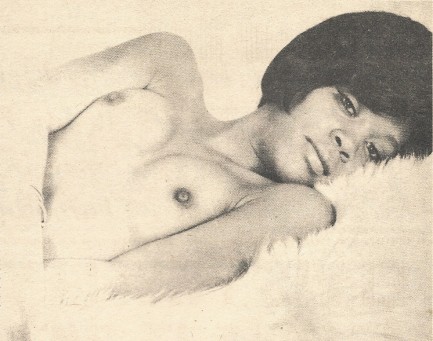
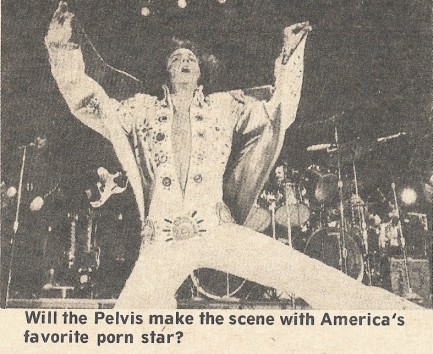
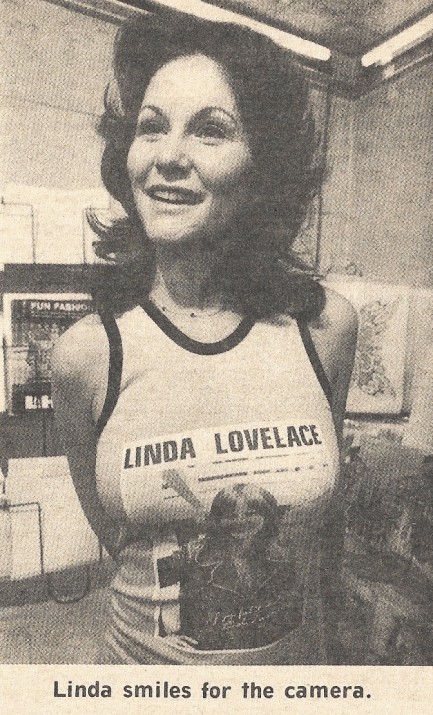

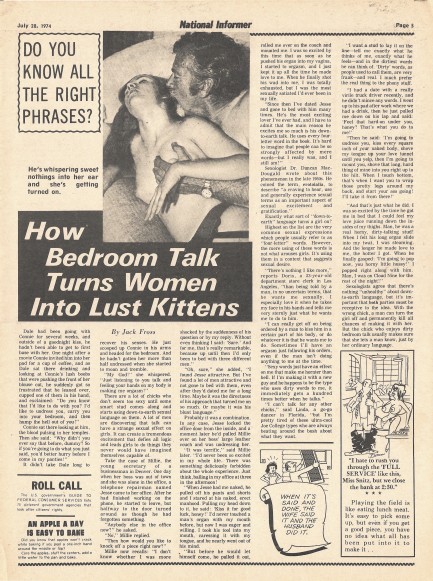
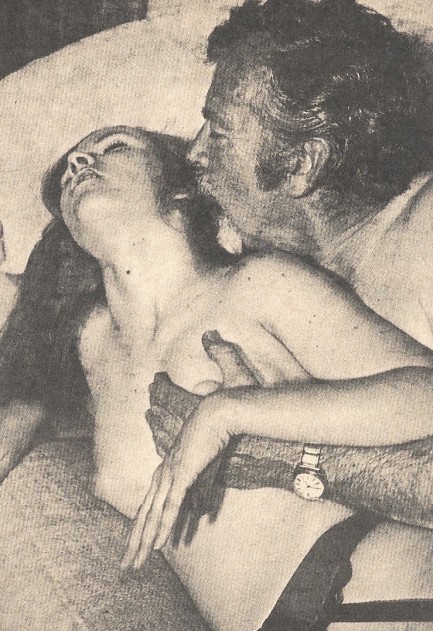
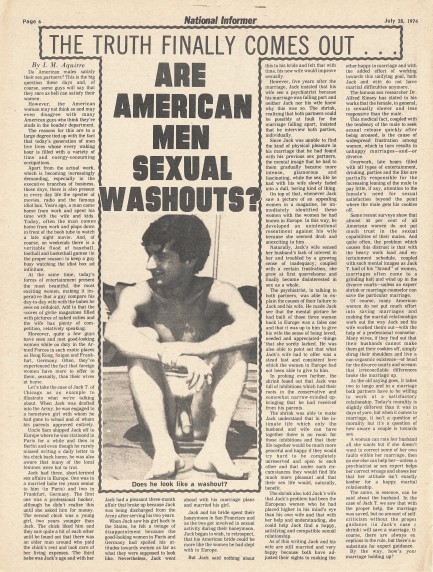
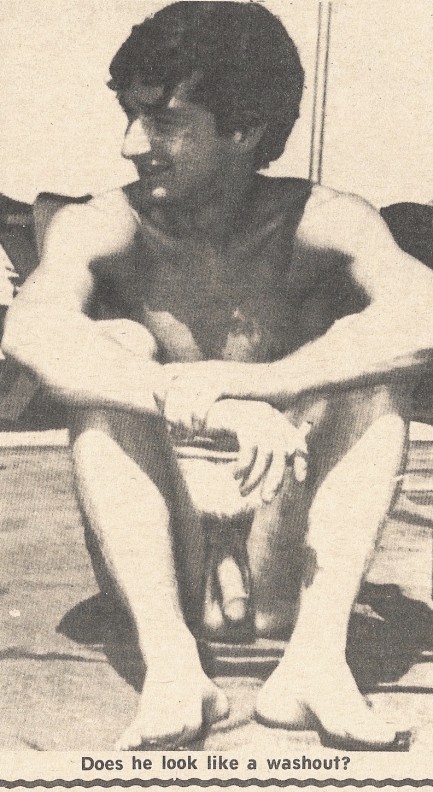
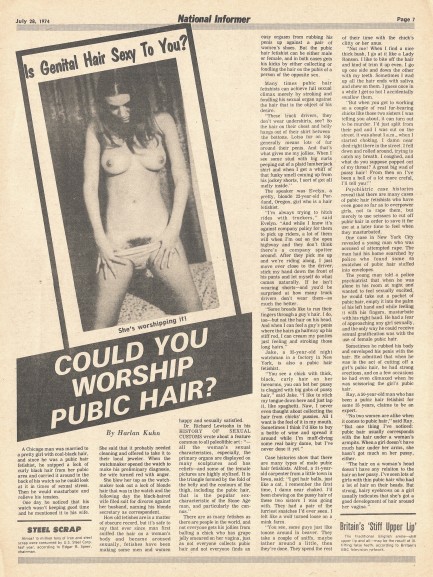
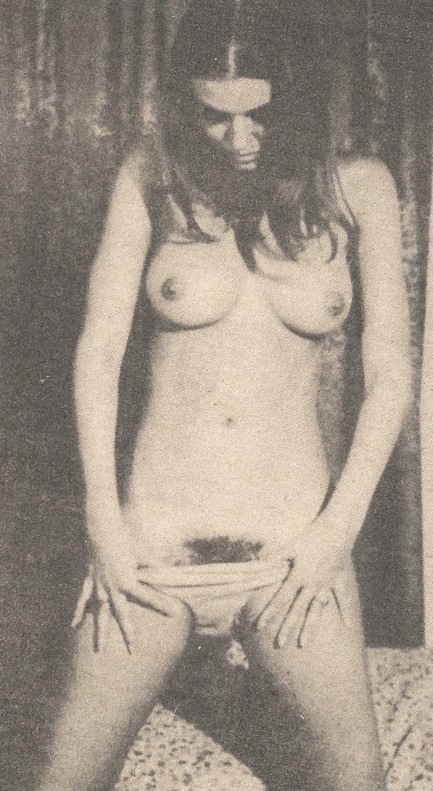
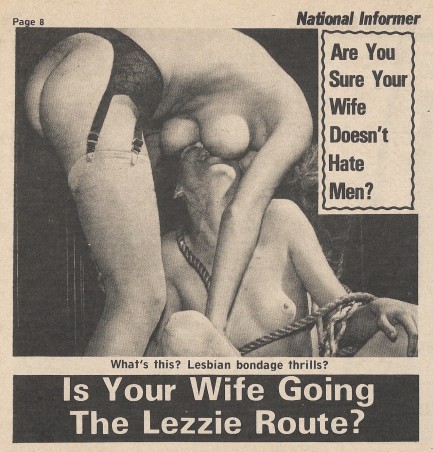

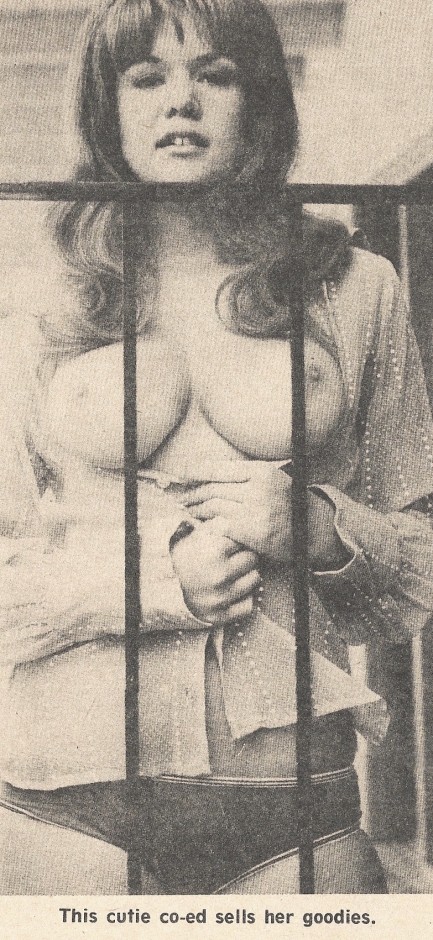
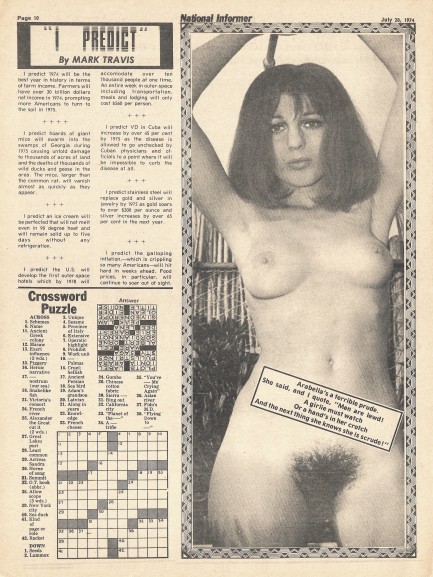
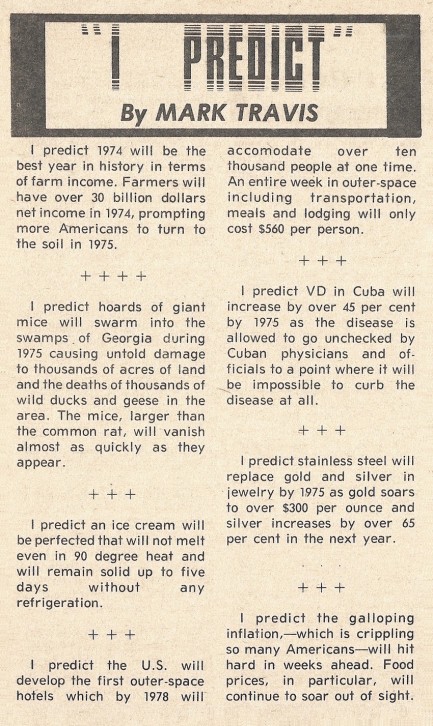

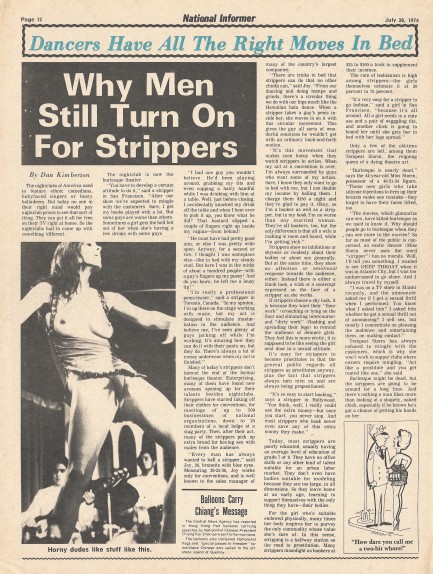
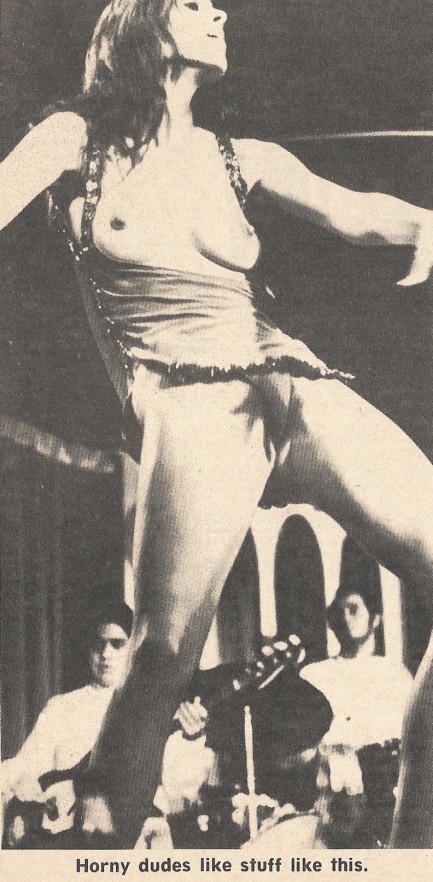
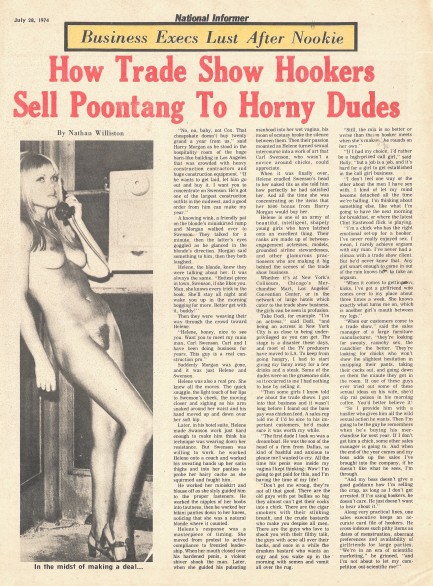

























 could make lampshades, baskets, placemats, keychains. A California man famously used it to make bikinis. We imagine it would work for household repairs, light sexual bondage, whatever you needed it for. The stuff was as popular as the hula hoop for a while. Apparently figures in the electrical industry even complained that a shortage of wiring insulation was due to Scoubidou because it used the same type of plastic.
could make lampshades, baskets, placemats, keychains. A California man famously used it to make bikinis. We imagine it would work for household repairs, light sexual bondage, whatever you needed it for. The stuff was as popular as the hula hoop for a while. Apparently figures in the electrical industry even complained that a shortage of wiring insulation was due to Scoubidou because it used the same type of plastic.


























